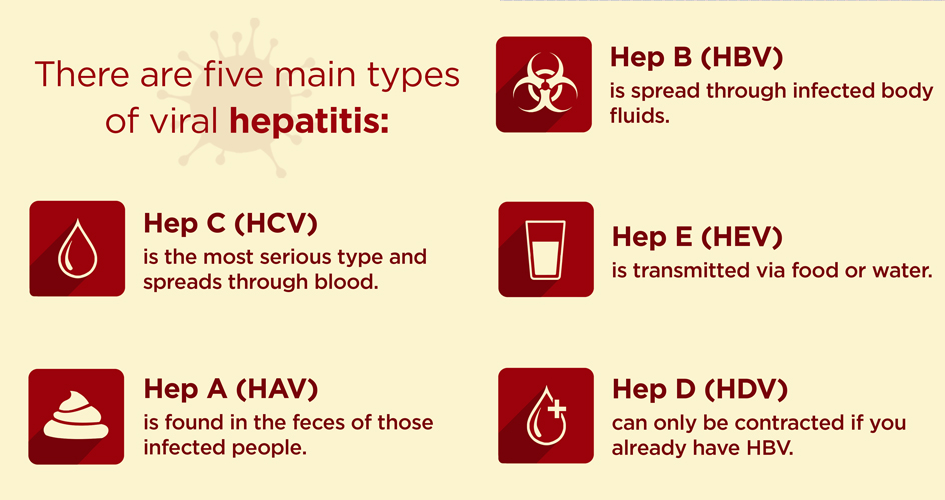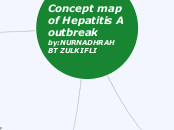Concept map of Hepatitis A outbreak by:NURNADHRAH BT ZULKIFLI
B) EPIDEMOLOGY
Globally, symptomatic HAV infections are believed to occur in around 1.5 million people a year
Hepatitis A is much more common in countries with underdeveloped sanitation systems and, thus, is a risk in most of the world
HAV is a common infection in developing nations of Africa, Asia, and Central and South America

C) PathogenesiS
1) MOOD OF Transmission
Close personal contact
contaminated food or water
Blood exposure
2) HAV invade into human body by mouth and cause viremia
3) After one week, the HAV reach liver cells replicate within
4) Then enter intestine with bile and appear in feces.
5) After HAV replicating and discharging, liver cells damage begin
6) Affects liver functions- hyperbilirubinaemia-jaundice
7) Inflammation of liver-hepatomegaly-pressure effects on other organs
D) CLINICAL FEATURES
INCUBATION PERIOD
• 10-50 days( usually 14-28 days)
Pre-icteric stage
Sudden onset of fever
chills
fatigue, malaise
Within a day or two, develops gastro intestinal symptoms
diarrhea
nausea n vomittng
High coloured urine, light coloured stools lasting for about of 3 to 5 days
Icteric stage

Onset of jaundice
Sclera looks yellow and skin looks lemon tinged
High coloured urine continues for several days
Stage lasts for 4 to 6 weeks
complication
fulminant hepatitis/severe liver function impairment
relapsing hepatitis
A) INTRODUCTION

Hepatitis A refers to liver inflammation caused by infection with the hepatitis A virus(HAV)
CAUSES
drugs
toxins
alcohol
virall infection (A,B,C,D)
other infections (parasites, bacteria)
physical damage
TYPES OF HEPATITIS

F) PREVENTION
Control of reservoir
Complete bed rest
Disinfection of faeces and fomite
Control of transmission
Promote simple measures of personal and community hygiene
Hand washing before and after toilet
Sanitary disposal of excretion
Purification of community water supply
Control of susceptible population
IMMUNIZATION
Hepatitis A vaccination is recommended for all children starting at age 1 year, travellers to certain countries, and others at risk
A full course containing two intramuscular injections of the vaccine
Vaccination Strategies Epidemiologic Considerations
WHO SHOULD BE VACCINATED?
All children at age 1 year (i.e., 12–23 months)
Children and adolescents ages 2–18 who live in states or communities where routine Hepatitis A vaccination has been implemented because of high disease incidence
Persons traveling to or working in countries that have high or intermediate rates of Hepatitis A
Homo sexuals
Persons who have occupational risk for infection
Persons who have chronic liver disease
E) LABORATORY DIAGNOSIS
Acute infection is diagnosed by the detection of HAV-IgM in serum by EIA/ELISA
Past Infection i.e. immunity is determined by the detection of HAV-IgG by EIA/ELISA
Cell culture – difficult and take up to 4 weeks, not routinely performed
Direct Detection – EM(electorn microscopy), RT-PCR of faeces. Can detect illness earlier than serology but rarely performed.
